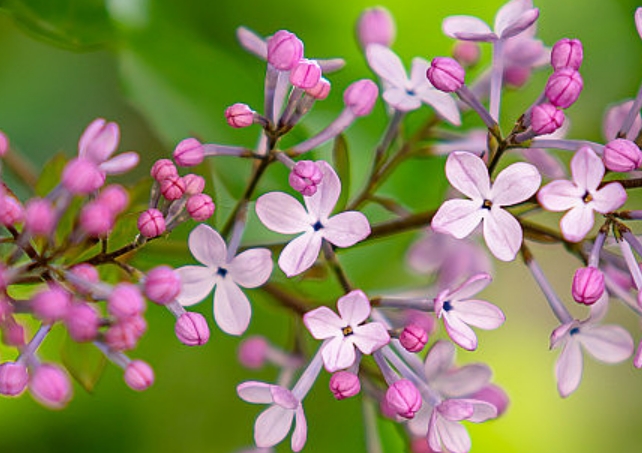Overview
Latin name: Syringa oblata
Common name: lilac
Abbr: Sob
Taxonomy: Oleaceae/Oleeae/Syringa
References: NCBI:txid178762
Level: Chromosome
Chromosome number: 2n=2X=46
Genome size: 1081.2Mb

Introduction: Syringa oblata, commonly called early lilac or broadleaf lilac, is a spreading, multi-trunked, deciduous shrub with arching branches which typically grows 8-12’ tall. It is native to China and Korea where it is typically found in woods, thickets, streambanks and along roads. Dense broad panicles (to 2-5” long) of very fragrant pinkish-lilac flowers (each floret to 0.5" long) bloom April-May. This species blooms earlier than most lilacs (about 10 days before S. vulgaris), hence the common name of early lilac. Flowers are followed by brown dehiscent capsules which persist on the shrub. Opposite, simple, round-ovate to reniform leaves (to 2-4" long) with abruptly acuminate tips and cordate bases emerge in spring with a hint of bronze, mature to dark green/blue green in summer, and finally develop purple-red tinting in fall. Early lilac is the only species of lilac to develop appreciable fall color.
Culture: Easily grown in average, medium moisture, well-drained soil in full sun. Tolerates light shade, but best bloom is in full sun. Prefers organically rich, moist, slightly acidic to slightly alkaline soils with good drainage. Avoid siting in frost pockets where late spring frost may damage the early bloom. This shrub needs good air circulation. Good tolerance for urban conditions. Prompt removal of faded flower panicles before seed set will increase the bloom in the following year. Prune as needed immediately after flowering.
Native Range: China
Bloom Time: April to May
Bloom Description: Pinkish-lilac
Flower: Showy, Fragrant, Good Cut
Leaf: Good Fall
Information sources: PlantFinder